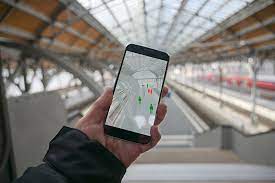Cellphone location data reveals close physical contact which predicts future Covid outbreaks, usually within weeks. JL
Jane Caffrey reports in NBC:
Researchers bought and analyzed cell phone location data, looking at instances when people were within six feet of each other. “Then we put all of the device locations together to map and track where devices were very close together and staying close together for a long time.” If they saw a lot of cases where people were in close contact, researchers were able to predict a COVID-19 outbreak. "We saw rates of close contact would increase in an area before we saw new cases. A few weeks later, we see more cases coming from that area. The Department of Public Health would identify an active outbreak in those places.”Imagine being able to predict a COVID-19 outbreak. Researchers at The Yale School of Public Health say they can do that by using location information from cell phones.
You probably always have your cell phone on you, and apps on the device track everywhere you go.
Researchers say that data could help in the fight against COVID-19 by providing information on social distancing behavior in towns and cities across Connecticut. Their work is laid out in the latest issue of Science Advances.
“We count all the times that distinct pairs of people come together over the course of an entire day within an entire town,” Forrest Crawford, Yale School of Public Health associate professor of biostatistics and the study’s lead author, said. “If that count is high, then that is a potential risk for an outbreak.”
The study is a collaboration between the Yale School of Public Health, the Connecticut Department of Public Health, the CDC, and Whitespace Ltd., a spatial data analytics firm.
Between February 2020 and January 2021, the researchers bought and analyzed cell phone location data from across Connecticut, looking at instances when people were within six feet of each other.
“Then we put all of the device locations together to map and track where devices were becoming very close together and staying close together for a long time,” Crawford said.
If they saw a lot of cases where people were in close contact, the researchers were able to predict a COVID-19 outbreak.
“We were able to see an outbreak that occurred in Danbury in the summer of 2020, well, before the Department of Public Health recorded a spike in cases from that area,” Crawford said. “What we saw throughout the state was that rates of close contact would increase in an area before we saw new cases. A few weeks later, we start to see more and more cases coming from that area. And very often the Department of Public Health would identify an active outbreak in those places.”
Crawford said people do not need to be worried about privacy, because all the data is anonymous.
“We don't map or track where people go, or where they live. We're only looking at the rates of two distinct devices coming together in the same place,” he said.
He said the methods could prove crucial in addressing the challenges posed by the pandemic by letting health officials allocate testing resources where they are most needed, and even stemming an outbreak before it begins.
"All of these data streams that public health decision-makers have access to come very late in the transmission process,” Crawford said. “So if there's any hope of mitigating transmission, mitigating the bad events that come together to create hospitalizations, and deaths, we need to know about them much, much sooner."




















0 comments:
Post a Comment